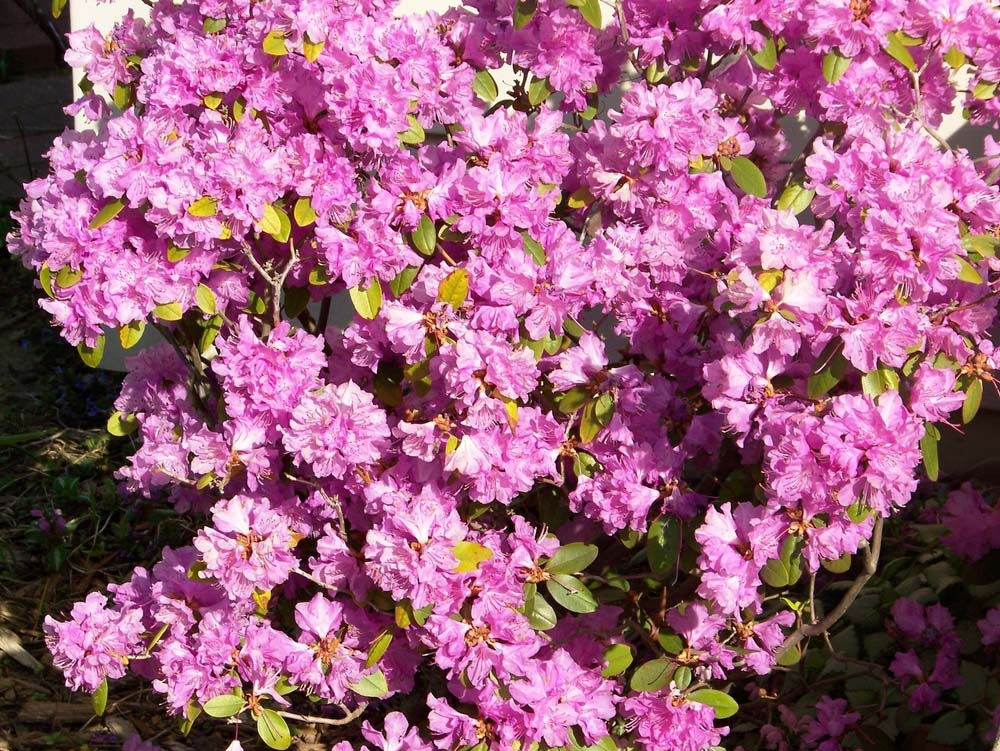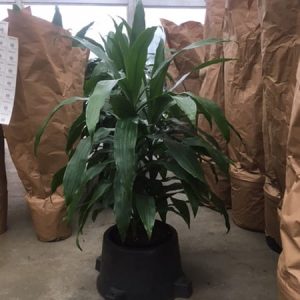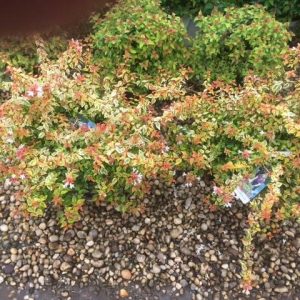Description
R. ‘PJM’ – R. P.J. Mezitt – This dwarf, compact, evergreen shrub grows 4′ feet tall and wide. It produces small, ovate, dark green leaves, which turn rich purple brown in winter if grown in full sun. Early in the season it bears trusses of 4-9 small, broadly funnel shaped, bright lavender-purple flowers, that are 1 ½” across.
Zones 4-8
Grow well aerated, moist but well drained, leafy, humus rich, acidic soil (ideally pH 4.5-6.0).Shallow planting is essential: all rhododendrons are surface rooting and well not tolerant deep planting. Most large leaves species and hybrids require dappled shade in sheltered woodland conditions, avoid deep shade immediately beneath a tree canopy. Rhododendrons generally perform best in temperate climates with adequate rainfall, such as the Pacific Northwest (including British Columbia) and the Atlantic States and provinces from Virginia North. Success is more difficult to achieve in the humid Southeast USA (except Azaleas), the arid Southwest USA, and the continental climate of the Rockies and Central Plains. In these areas, heat tolerance becomes as important as cold hardiness. Proper siting, soil preparation, wind protection, and attention to watering are essential for success in these less favorable areas. Most Azaleas and many of the smaller leaved evergreen rhododendrons, as well as the “ironclad” hybrids , prefer full sun in the Northern USA and Canada, dappled shade in the South US. Most dwarf alpine species will tolerate full sun in cooler climates, provided the soil remains moist. Avoid frost pockets to reduce the risk of split occurring in winter. To conserve moisture and to protect the shallow roots from extremes of heat and cold, mulch annually with a loose, open material, such as pine needles, bark, or chopped oak leaves. After flowering, dead head where practical, to promote vegetative growth rather than seed production. When deadheading, be careful not to damage or remove young emerging from below the flowers.





